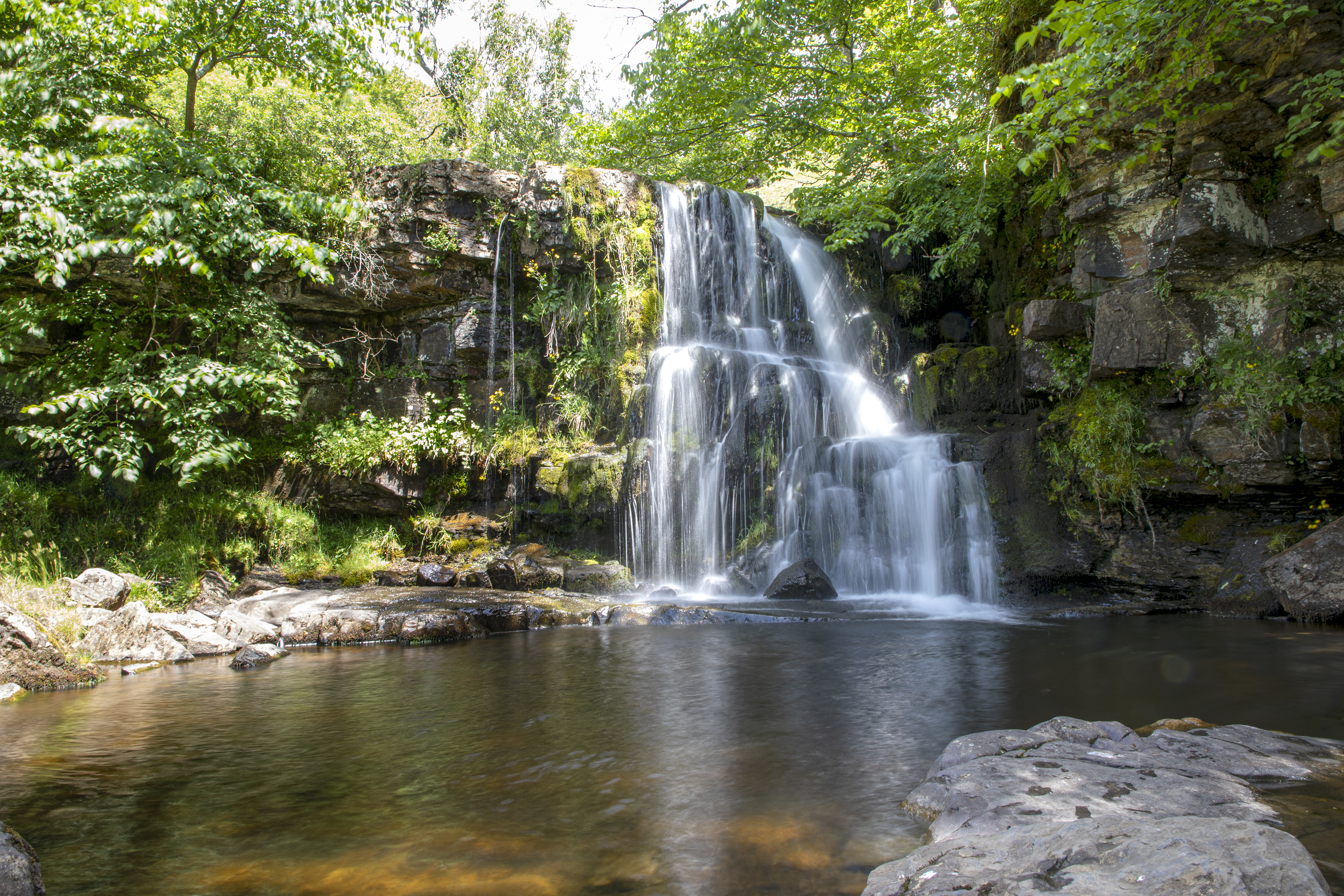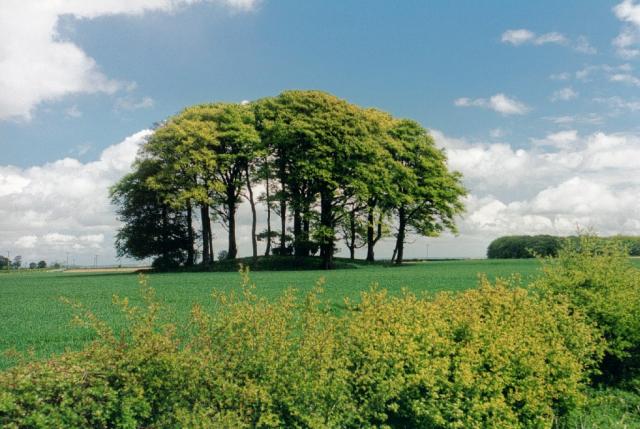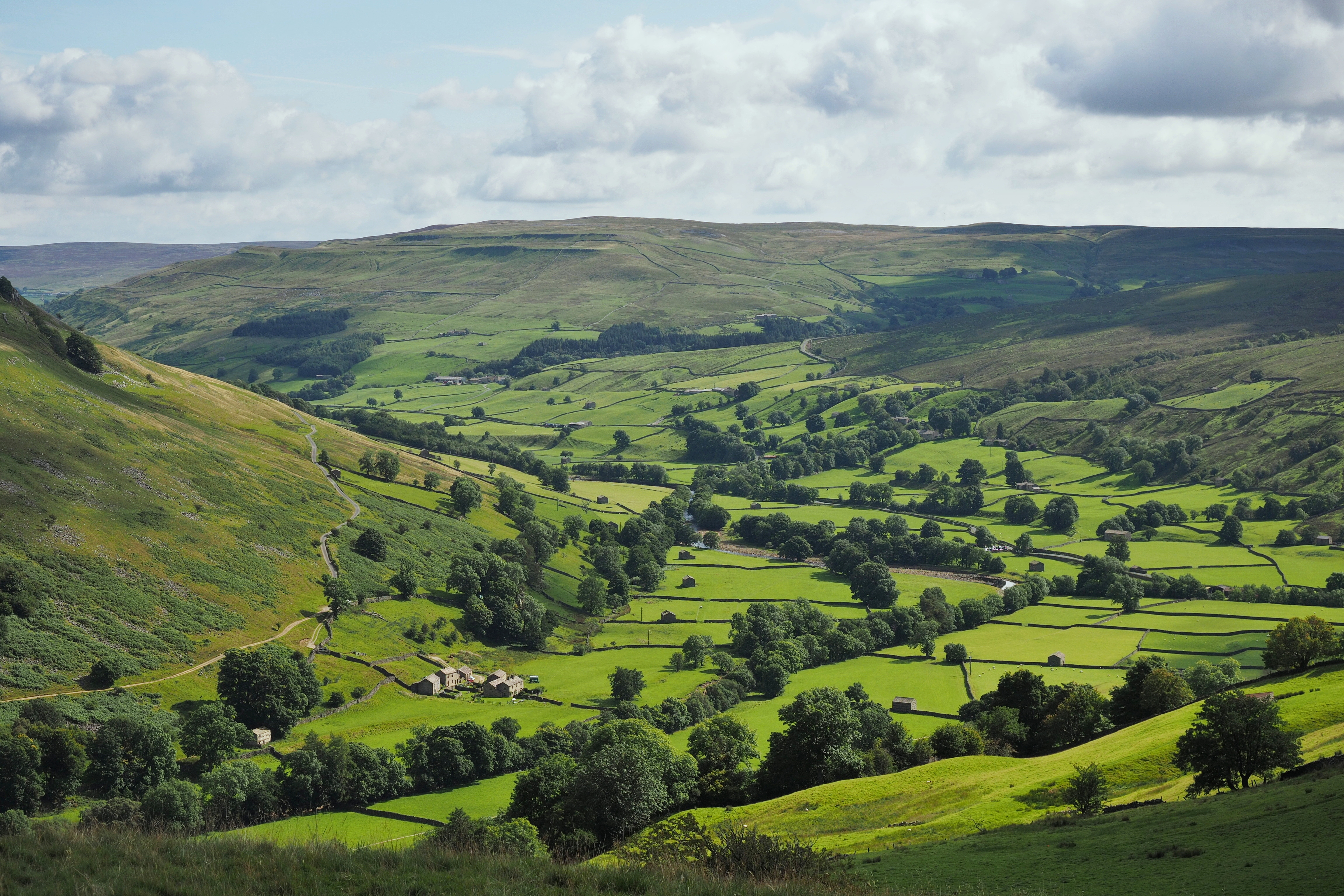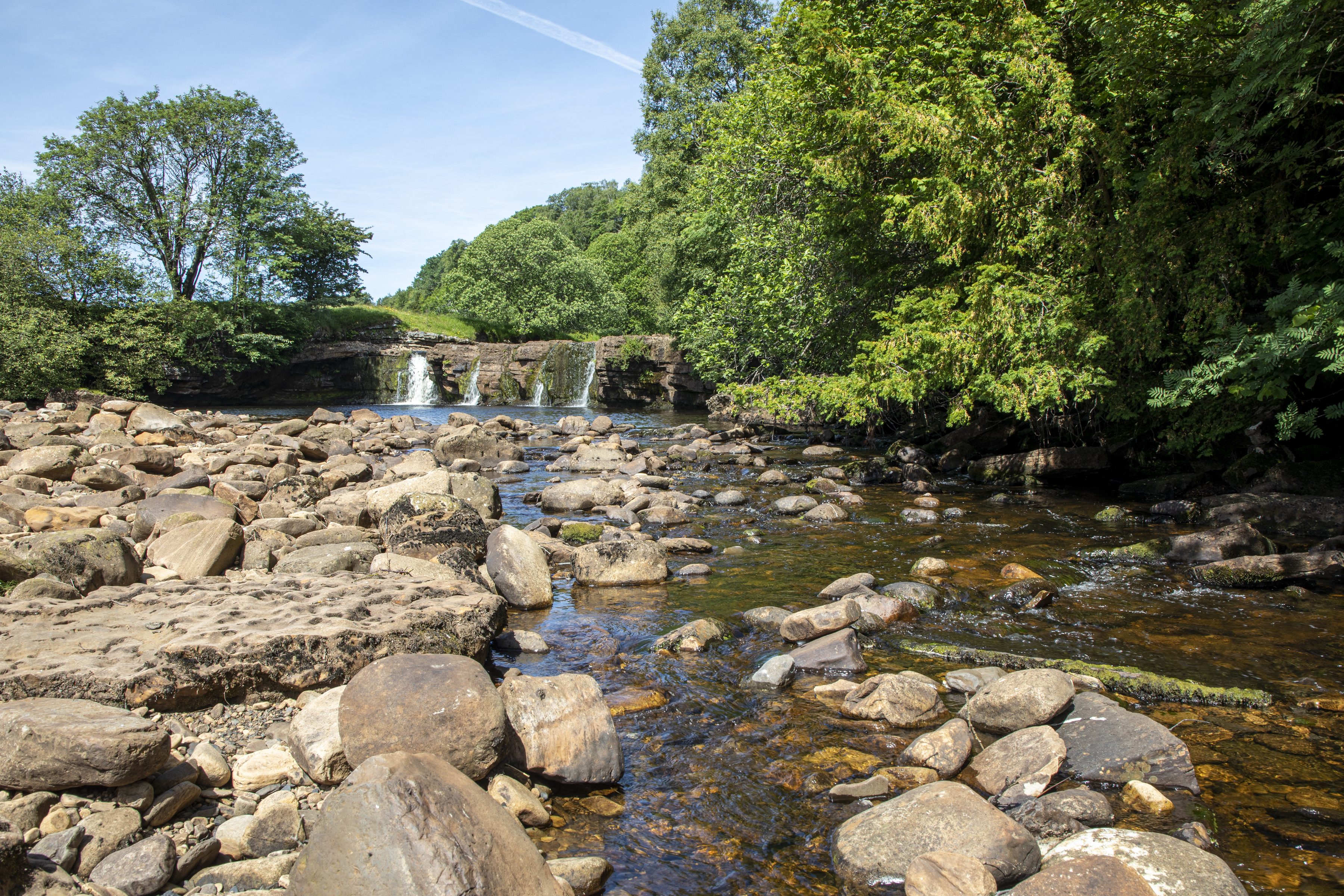|
Kisdon
Kisdon, also called Kisdon Hill, is a fell situated in upper Swaledale in the Yorkshire Dales National Park in North Yorkshire, England. Geography and history Kisdon was named by early Norse settlers and it has Kisdon Farm on the southern slopes above Straw Beck. The Fell is unusual in that it is an isolated area of high ground with no ridges connecting it to other fells. This came about at the end of the last Ice age when the moraine left by the retreating glacier blocked the original course of the River Swale on the west side of the fell and diverted it to its present course, forming a gorge to the east and leaving Kisdon isolated from other high ground. Kisdon's isolation gives it the status of a Marilyn even though it has only a modest height of 499 metres (1636 feet). Another unusual feature of Kisdon is that it has no official footpath to the highest point even though it is crossed by two busy rights of way high up on the fell. One of these is the Pennine Way be ... [...More Info...] [...Related Items...] OR: [Wikipedia] [Google] [Baidu] |
Kisdon Force
Kisdon Force is a series of waterfalls on the River Swale in Swaledale, England. The falls are situated within the Yorkshire Dales National Park in the county of North Yorkshire, 500 metres downstream from the small hamlet of Keld at grid reference . Kisdon Force is one of several waterfalls on the Swale in the Keld area: the others are East Gill Force, Catrake Force and Wain Wath Force. All occur where the river cuts a gorge through the Carboniferous Limestone between the hills of Kisdon and Rogan's Seat. The falls in this area are termed "forces" after the Norse word ''fors'' or ''foss'', which means "waterfall". Both upper and lower Kisdon Force can be negotiated by canoeists, although a high degree of skill and experience is needed. The upper falls are rated Grade IV whilst the lower falls are rated more difficult at Grade V. The falls drop over two cascades and are surrounded by Kisdon Force Woods, a Site of Special Scientific Interest covering an area of 38 h ... [...More Info...] [...Related Items...] OR: [Wikipedia] [Google] [Baidu] |
River Swale
The River Swale in Yorkshire, England, is a major tributary of the River Ure, which becomes the River Ouse, that empties into the North Sea via the Humber Estuary. The river gives its name to Swaledale, the valley through which it flows. The river and its valley are home to many types of flora and fauna typical to the Yorkshire Dales. Like similar rivers in the region, the river carves through several types of rock and has features typical of both river and glacial erosion. The River Swale has been a contributory factor in the settlements that have been recorded throughout its history. It has provided water to aid in the raising of crops and livestock, but also in the various mining activities that have occurred since Roman times and before. The river is said to be the fastest flowing in England and its levels have been known to rise in 20 minutes. Annual rainfall figures average 1800 mm p.a. in the headwaters and 1300 mm p.a. in the lower waters over a drop of ... [...More Info...] [...Related Items...] OR: [Wikipedia] [Google] [Baidu] |
East Gill Force
East Gill Force is a waterfall in Swaledale, east of the hamlet of Keld, in the Yorkshire Dales National Park, North Yorkshire, England. The falls are located on East Gill at grid reference , just before its confluence with the River Swale at the point where the Pennine Way and the Coast to Coast Walk intersect. The falls are a popular spot for visitors, not just long-distance walkers but also families and picnickers because of the proximity of the road. East Gill Force has two main torrents: the upper falls have an impressive drop whilst the lower section is a series of stepped cascades that fall as East Gill enters the River Swale. East Gill Force is one of four waterfalls in the Keld area, the others being Kisdon Force, Catrake Force and Wain Wath Force that occur where the river cuts a gorge through the carboniferous limestone between the hills of Kisdon and Rogan's Seat. The falls in this area are called "forces" after the Norse Norse is a demonym for Norsemen, ... [...More Info...] [...Related Items...] OR: [Wikipedia] [Google] [Baidu] |
Pennine Way
The Pennine Way is a National Trail in England, with a small section in Scotland. The trail stretches for from Edale, in the northern Derbyshire Peak District, north through the Yorkshire Dales and Northumberland National Park and ends at Kirk Yetholm, just inside the Scottish border. The path runs along the Pennine hills, sometimes described as the "backbone of England". Although not the United Kingdom's longest National Trail (this distinction belongs to the South West Coast Path), it is according to The Ramblers "one of Britain's best known and toughest". History The path was the idea of the journalist and rambler Tom Stephenson, inspired by similar trails in the United States of America, particularly the Appalachian Trail. Stephenson proposed the concept in an article for the ''Daily Herald'' in 1935, and lobbied Parliament for the creation of an official trail. The walk was planned to end at Wooler but it was decided that Kirk Yetholm would be the finishing point. The ... [...More Info...] [...Related Items...] OR: [Wikipedia] [Google] [Baidu] |
Swaledale
Swaledale is one of the northernmost dales (valleys) in Yorkshire Dales National Park, located in northern England. It is the dale of the River Swale on the east side of the Pennines in North Yorkshire. Geographical overview Swaledale runs broadly from west to east, from the high moors on the Cumbria–Yorkshire boundary at the watershed of Northern England to the market town of Richmond, where the dale meets the lowlands. Nine Standards Rigg, the prominent ridge with nine ancient tall cairns, rises on the watershed at the head of Swaledale. To the south and east of the ridge a number of smaller dales (Birkdale, Little Sleddale, Great Sleddale and Whitsundale) join to form the narrow valley of upper Swaledale at the small village of Keld. From there, the valley runs briefly south then turns east at Thwaite to broaden progressively as it passes Muker, Gunnerside, Low Row, Healaugh and Reeth. The Pennine valley ends at Richmond, where an important medieval castle ... [...More Info...] [...Related Items...] OR: [Wikipedia] [Google] [Baidu] |
Marilyn (hill)
This is a list of Marilyn hills and mountains in the United Kingdom, Isle of Man and Ireland by height. Marilyns are defined as peaks with a prominence of or more, regardless of height or any other merit (e.g. topographic isolation, as used in Munros). Thus, Marilyns can be mountains, with a height above , or relatively small hills. there were 2,011 recorded Marilyns. Definition The Marilyn classification was created by Alan Dawson in his 1992 book ''The Relative Hills of Britain''. The name Marilyn was coined by Dawson as a punning contrast to the '' Munro'' classification of Scottish mountains above , but which has no explicit prominence threshold, being homophonous with (Marilyn) '' Monroe''. The list of Marilyns was extended to Ireland by Clem Clements. Marilyn was the first of several subsequent British Isles classifications that rely solely on prominence, including the P600s, the HuMPs, and the TuMPs. Topographic prominence is a more difficult to estimate than ... [...More Info...] [...Related Items...] OR: [Wikipedia] [Google] [Baidu] |
Yorkshire Dales
The Yorkshire Dales is an upland area of the Pennines in the historic county of Yorkshire, England, most of it in the Yorkshire Dales National Park created in 1954. The Dales comprise river valleys and the hills rising from the Vale of York westwards to the hilltops of the Pennine watershed. In Ribblesdale, Dentdale and Garsdale, the area extends westwards across the watershed, but most of the valleys drain eastwards to the Vale of York, into the Ouse and the Humber. The extensive limestone cave systems are a major area for caving in the UK and numerous walking trails run through the hills and dales. Etymology The word ''dale'', like ''dell'', is derived from the Old English word ''dæl''. It has cognates in the Nordic/ Germanic words for valley (''dal'', ''tal''), and occurs in valley names across Yorkshire and Northern England. Usage here may have been reinforced by Nordic languages during the time of the Danelaw. Most of the dales are named after their river or stre ... [...More Info...] [...Related Items...] OR: [Wikipedia] [Google] [Baidu] |
Keld, North Yorkshire
Keld is a village in the English county of North Yorkshire. It is in Swaledale, in the district of Richmondshire and the Yorkshire Dales National Park. The name derives from the Viking word ''Kelda'' meaning a spring and the village was once called ''Appletre Kelde'' – the spring near the apple trees. Keld is the crossing point of the Coast to Coast Walk and the Pennine Way long-distance footpaths at the head of Swaledale, and marks the end of the Swale Trail, a 20 km mountain bike trail which starts in Reeth. At the height of the lead-mining industry in Swaledale in the late 19th century, several notable buildings – now Grade II listed – were erected: they include the Congregational and Methodist chapels, the school and the Literary Institute. A tea room and small shop operate at Park Lodge from Easter to autumn. Out of season, local volunteers provide a self service café for visitors in the village’s Public Hall. Keld’s Youth Hostel closed in 2008 and has ... [...More Info...] [...Related Items...] OR: [Wikipedia] [Google] [Baidu] |
Wain Wath Force
Wain Wath Force is a waterfall on the River Swale in the Yorkshire Dales National Park, North Yorkshire, England. The falls are at grid reference , upstream from the hamlet of Keld which has three other waterfalls in its vicinity ( Kisdon Force, East Gill Force, and Catrake Force). The names of waterfalls in the north of England often contain "force" after the Old Norse word ''foss'', which means "waterfall". Its name derives from the ford above the fall, ''wath'' being the Anglo-Saxon word for a ford. Wain may denote that it was passable for a cart or wain. Wain Wath Force is not a substantial waterfall: it has a drop of only around 1.5 metres as the river flows beneath the limestone cliffs of Cotterby Scar. Despite its modest height it is popular with visitors; the Coast to Coast long-distance footpath passes the falls on the north bank of the River Swale while the main motor road up Upper Swaledale Swaledale is one of the northernmost dales (valleys) in Yorkshire D ... [...More Info...] [...Related Items...] OR: [Wikipedia] [Google] [Baidu] |
Catrake Force
Catrake Force is a waterfall on the River Swale in North Yorkshire, England. It is not visible from the road but is accessible via a campsite in Keld. It comprises a series of four steps, each its own small waterfall, and each with a very different character – the largest single drop being about . It lies just upstream of Keld, downstream from Wain Wath Force. The next waterfall downstream is Kisdon Force. Waterfalls in the north of England are often termed ''Forces'' after the Norse word ''Foss'' which means waterfall, whilst Catrake derives from the Latin ''cataracta'' (waterfall) via Middle English. East Gill Force East Gill Force, a nearby waterfall on the tributary of East Gill just above its confluence with the Swale, is more obvious and accessible (being on both the Pennine Way and Coast to Coast Walk The Coast to Coast Walk is a long-distance footpath between the west and east coasts of Northern England, nominally long. Devised by Alfred Wainwright, it p ... [...More Info...] [...Related Items...] OR: [Wikipedia] [Google] [Baidu] |
Rogan's Seat
Rogan's Seat is a remote hill located near East Stonesdale and Gunnerside Gill, in the Yorkshire Dales in England. It is a high expanse of moorland that stretches alongside Swaledale, Swinner Gill and Gunnerside Gill. It is the joint 17th highest fell in North Yorkshire along with Great Knoutberry Hill. There has been controversy about how specifically the summit can be reached via a direct footpath; however, landowners of the Yorkshire grouse moors were tolerant in deciding not to publish a correct right of way for walkers. Despite this drawback, it attracts a lot of local interest, particularly being just 2 kilometres from the lower Valley waterfalls in Gunnerside Gill. The most appropriate route to ascend Rogan's Seat to its summit would be to divert leftbound from Gunnerside Gill and follow a bridleway track north for 2 kilometres. The track is fairly flat but for explorative walkers the journey back down the same route can become tedious. The views are not spe ... [...More Info...] [...Related Items...] OR: [Wikipedia] [Google] [Baidu] |
Great Shunner Fell
Great Shunner Fell is the third highest mountain in the Yorkshire Dales, North Yorkshire, England, and the highest point in Wensleydale; at 716 metres above sea level. In clear weather the summit affords views of Wensleydale to the south, Ribblesdale to the south west and Swaledale to the north, as well as views into Cumbria and County Durham beyond the A66. The Pennine Way passes over its summit, on the way from Hawes to Keld. The popularity of this route had eroded vegetation from a strip 70 m wide across the moor, which has been alleviated since 1996 by the construction of a path made of flagstones. The summit holds a cross-shaped windbreak of which the triangulation pillar has been built into the northern 'arm'. Great Sleddale Beck, which becomes the River Swale after its confluence with Birkdale Beck has its sources on the northern slopes of Great Shunner Fell, while the southern slopes drain into the River Ure and Wensleydale. The dominating rock type i ... [...More Info...] [...Related Items...] OR: [Wikipedia] [Google] [Baidu] |







